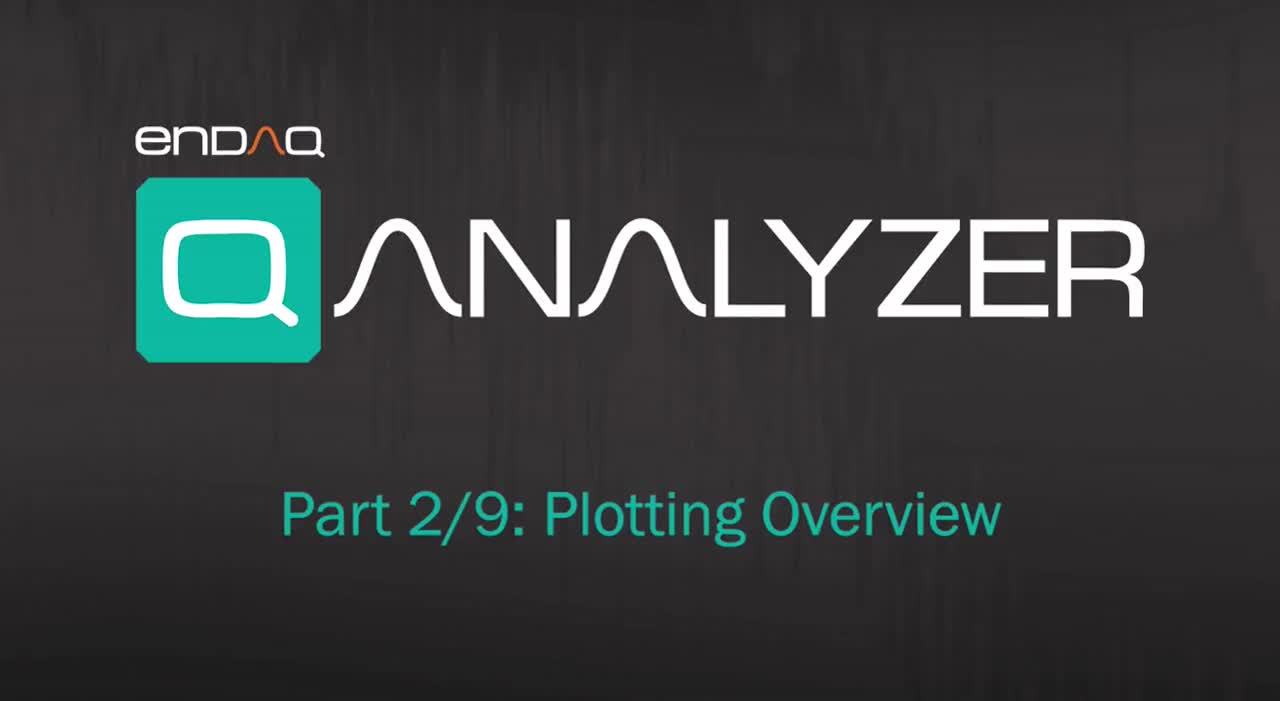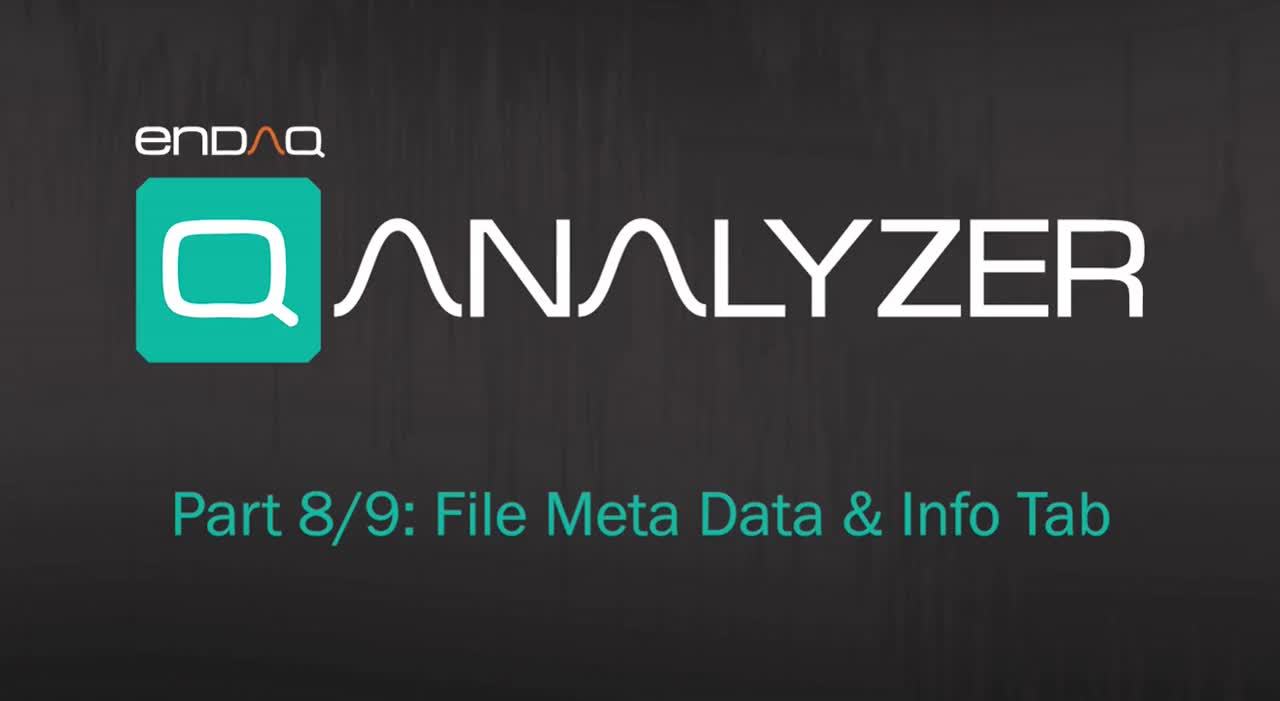Plot and Analysis in Analyzer Software
he Analyzer software has a variety of analysis and plotting features that are made possible by leveraging MATLAB.
In this Article
Video Walk through
Below is a quick video which walks through the plotting and analysis features. ****************************************************


Opening .MAT File
After The “Completed file conversion.” message appears, your files have been successfully converted and added to the chosen output directory. To open a .MAT file for analysis, press the "Open .MAT File" button. This will prompt you to select a file to open in the analyzer. The file you select must be a .MAT file converted from an IDE with the Endaq Analyzer.

After opening the file, three windows will open:
- An "Analysis" window with "Channel Selection," "Analysis Selection," and "Filter Selection" options, along with export and plotting options:
- plot window showing the waveform of the first subchannel on the first channel:

Navigating the Plot Window
Upon opening a .MAT file, a window ("Figure 1") will open showing a plot of the waveform of the first subchannel on the first channel, with the “Filtered” setting selected. After any change to the “Channel Selection” or “Analysis Selection”, or if “Filtered” is selected and any filter settings are changed and applied, press the “Plot” button to generate a new plot.

- This will open a new window, showing the graph of the newly selected channels and analysis settings.
You may also change either the "Start Time" or the "End Time", and then press “Update” to create a graph with the new sample.
Once the window opens showing the graph of the data, there are a few tools that you can use to navigate the graph. From left to right on the tool box at the top of the screen:

- Zoom In
- Click on the graph where you want to zoom in.
- Click and drag to draw a box over the part of the graph you want to zoom in on.
- Double click the graph to revert to the original dimensions.
- Zoom out
- Once zoomed in, click on the graph to zoom out.
- Double click the graph to revert to the original dimensions.
- Pan
- When selected, click and drag the graph to move it around and view different parts.
- Rotate
- When selected, click and drag the graph to rotate it and see a three dimensional view.
- Data Cursor
- When selected, click anywhere on the plot to show a datatip, which displays a black marker and a text box with the selected point's coordinates.
- Right click on the datatip to change the "Selection Style" and "Display Style", or to delete any datatips.
- Colormap
- Toggle this on and off to show a colormap to the right of the screen.
- Right click on the colormap to view more advanced colormap settings.
- Legend
- Toggle this on and off to show the plot's legend.
- Right click on the legend to view more advanced legend settings.
Analysis
Selecting Channels
In the "Analysis" window, you can change the channel by selecting the first drop-down menu under the section “Channel Selection”, and clicking on one of the channels in the list.
You can then change the subchannel by using the second drop-down menu under the “Channel Selection” section. Any acceleration channel will have the subchannels X, Y, Z, or All Subchannels. the Pressure/Temperature and Control Pad Pressure/Temperature channels will have the subchannels Pressure and Temperature.

Selecting Analysis Settings
Under “Analysis Selection”, you can change the type of vibration analysis being done on the data by using the first drop-down menu:
- By default, “Waveform” is selected, which shows the vibrations collected from the device.
- “FFT” is a fast Fourier transform, which samples the signal over time and divides it into its frequency components.
- “PSD” is power spectral density, which shows the strength of the variations as a function of frequency
- "Complex FFT" is both the real and imaginary components of the Fast Fourier Transform, which represents the frequencies of the oscillations in the signal.
- “Spectrogram” is a visual representation of the spectrum of frequencies as they vary with time represented as a color map.
- Note: The selected channel must have enough data to make a spectrogram.
- “Waterfall” is a visual representation of the spectrum of frequencies as they vary with time represented with overlapping and occluding line plots.
The checkbox gives the option to apply a filter to your data. Note: The "Filtered" settings don't affect channels with low sample-rates.

Using Filters
The third box in the "Analysis" window shows different filter parameters to apply to the data.
- Use the first drop down menu to change the "Filter Design".
- Butterworth, Chebyshev Type I, Chebyshev Type II, Elliptic
- Use the second drop down menu to change the "Filter Type".
- Bandpass, Bandstop, Lowpass, Highpass
- Use the following five input boxes to change the "F - low", the "F - high", "Stop Att.", "Pass Rip.", and "Order".
- Note: Not all parameters are used for all filters, and some may be grayed out if they are not applicable to the combination of filter design and type you have selected
The filter will automatically be applied to the data before it is plotted or exported.

